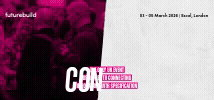In the rapidly evolving landscape of the modern construction industry, digital tools are revolutionising and transforming how we develop and operate built environments, enhancing both the accuracy and efficiency of design and construction processes. Manufacturer data plays a vital role, and leveraging data effectively can significantly improve the construction process. As the demand for precision, traceability, and efficiency increases, digital construction tools emerge not merely as supplements but as core components that enrich the physical product offerings in the sector. Any digital solution should complement existing workflows of roles throughout the industry, from design, to build and into operation. For architects and specifiers, integrating these digital solutions is essential to stay competitive, demonstrate accuracy, and deliver high-quality projects.
The Role of Digital Tools in Construction
Digital tools are designed to complement physical products, improving the overall construction process. The primary goal of these tools is to aid in the accuracy of design and the efficiency of construction. Successful digital construction solutions should seamlessly integrate into existing workflows, from the initial design phase to construction and operation.
A successful digital construction solution should be;
- Driven by Accurate, Up-to-Date Information: The foundation of any effective digital tool is the accuracy and timeliness of the information it provides. This ensures all stakeholders can access the most current data, reducing errors and improving decision-making. This is why good data is so important. The ability to source and accurately track each step of the process, especially concerning governance and maintenance is vital.
- Fulfilling a Need or Solving a Problem: Digital tools should address specific needs or problems. Whether that is improving project management, understanding how solutions have been designed to work inside a building, enhancing data accuracy, or increasing productivity, the tool must provide tangible benefits. Traditionally, information was conveyed via the written word leaving much room for interpretation and human error. Digitising this process into Building Information Modeling (BIM) software aids design and communicates the solution clearly, without ambiguity or error. This automation of the design process is beneficial to all.
- Complementing Physical Products: While the industry has been seen as conservative and slow to evolve, digital solutions have advanced. BIM software can now provide detailed digital representations of physical structures, strengthening collaboration, and data in design, improving accuracy, and reducing rework. This has placed less emphasis on physical products and more on selecting the right partner with the right approach overall.
- Integrating with Existing Workflows: To be truly effective, digital tools must integrate smoothly with the workflows of various roles within the construction industry. This includes architects, engineers, contractors, and facility managers. All functions have their preferred ways of working and the right digital tools can complement and bring these practices together more seamlessly.
- Agile and Future-Focused: The construction industry is constantly evolving, and digital tools must be adaptable to keep pace with these changes. An agile approach ensures digital tools can grow and remain relevant, aligning with the industry’s future direction.
Practical Steps for Implementing Digital Tools
- Identify Your Needs: Assess your current processes to identify areas where digital tools can prove most beneficial. Work backward to avoid the repetition of mistakes. Identify where issues on site have happened previously and use these key learnings to review and improve with a data-led digital approach to minimise human error. Consider project management, data accuracy, productivity, resource management, and safety.
- Research Available Tools: Explore the various digital tools available. Look for software and technology that align with your needs and budget but most importantly select the right partner and provider. A good indicator of a trustworthy partner is to choose those who are CCPI verified or who have ISO9001
- Train Your Team: Invest in training to ensure your team is proficient in using the new digital tools. This may involve formal training sessions, online courses, or hands-on workshops.
- Monitor and Adapt: Don’t just monitor the performance of the digital tools you have selected, fully engage with the manufacturer as not only a solution but a partnership. Digital tools will evolve, and your business will need to adapt, so choose a manufacturer with a great service offering and digital tools.
By focusing on these key characteristics and practical steps, architects and specifiers can leverage digital tools to enhance the accuracy and efficiency of their construction projects, ultimately delivering better outcomes for all stakeholders.
As the construction industry embraces digital transformation, the focus on accuracy in design and efficiency in construction remains at the forefront. Digital construction tools are powerful enablers that enhance the delivery of physical products and contribute to bolstering the entire lifecycle of a project—from conception through to demolition. Whether through enhanced design precision, streamlined project management, construction automation, or data analytics. leading solutions complement existing workflows and ultimately reshape the industry’s future.
The key lies in how well we leverage these digital construction tools to support ,not just the present demands, but also the intelligent evolution of construction practices in the years to come.



